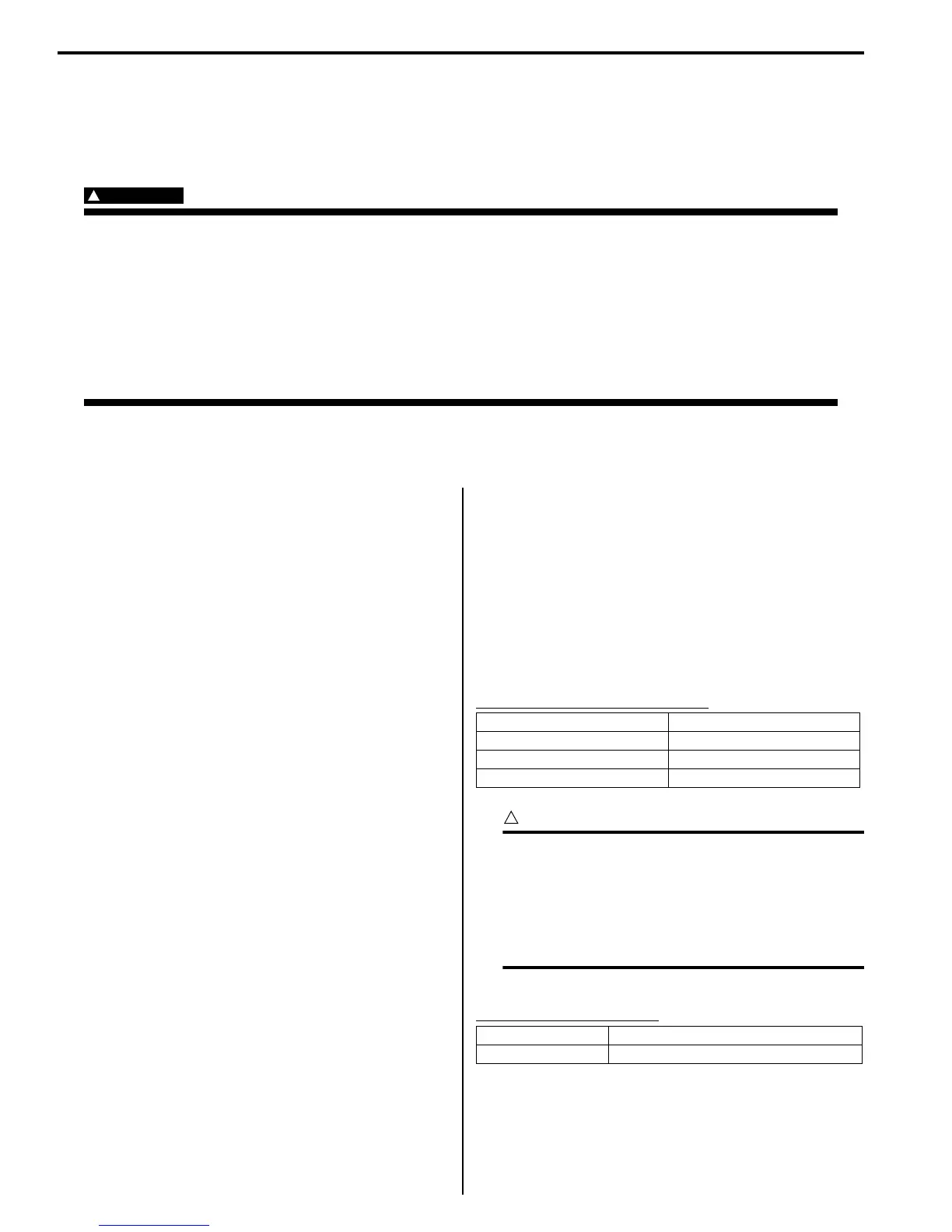1F-1 Engine Cooling System:
Engine Cooling System
Precautions
Engine Cooling System Warning
B705H11600001
WARNING
!
• You can be injured by scalding fluid or steam if you open the radiator cap when the engine is hot.
After the engine cools, wrap a thick cloth around cap and carefully remove the cap by turning it a
quarter turn to allow pressure to escape and then turn the cap all the way off.
• The engine must be cool before servicing the cooling system.
• Coolant is harmful:
– If it comes in contact with skin or eyes, flush with water.
– If swallowed accidentally, induce vomiting and call physician immediately.
– Keep it away from children.
General Description
Cooling System Description
B705H11601001
The engine is cooled by the forced circulation of engine
coolant, using a high-capacity, centrifugal water pump,
through water jackets formed in the cylinder and cylinder
head, and through the radiator. The tube-and-fin type
radiator is made of aluminum, which is characterized by
lightness in weight and good heat dissipation.
A wax-pellet type thermostat is used to regulate the flow
of engine coolant through the radiator. As the coolant
temperature rises to about 88 °C (190 °F) the thermostat
valve unseats and a normal coolant flow is established.
At about 100 °C (212 °F) the thermostat becomes
completely open and, as a result, heat is released to the
atmosphere through the radiator core.
Engine Coolant Description
B705H11601002
At the time of manufacture, the cooling system is filled
with a 50:50 mixture of distilled water and ethylene
glycol anti-freeze. This 50:50 mixture will provide the
optimum corrosion protection and excellent heat
protection, and will protect the cooling system from
freezing at temperatures above –31 °C (–24 °F).
If the vehicle is to be exposed to temperatures below –
31 °C (–24 °F), this mixing ratio should be increased up
to 55% or 60% according to the figure.
Anti-freeze Proportioning Chart
CAUTION
!
• Use a high quality ethylene glycol base
anti-freeze, mixed with distilled water. Do
not mix an alcohol base anti-freeze and
different brands of anti-freeze.
• Do not put in more than 60% anti-freeze or
less than 50%. (Refer to Fig. 1 and 2.)
50% Engine coolant including reserve tank capacity
Engine Coolant Capacity
Anti-freeze density Freezing point
50% –31 °C (–24 °F)
55% –40 °C (–40 °F)
60% –55 °C (–67 °F)
Anti-freeze 975 ml (2.1/1.7 US/lmp. pt)
Water 975 ml (2.1/1.7 US/lmp. pt)
